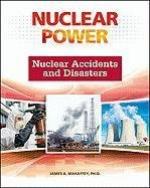|
This section contains 483 words (approx. 2 pages at 300 words per page) |

|
Emergency responders use a number of technologies to monitor radiation exposure, both to themselves and to others at the scene. Rescue personnel typically wear dosimeters or film badges, small devices that can record cumulative exposure to some types of radiation. In some instances technicians may have mechanical devices for measuring radiological contamination, such as a Geiger counter. Developed by the German physicist Hans Geiger (1882-1945), these easy to-use machines can detect different types of ionizing radiation, such as alpha and beta particles as well as gamma rays, depending upon calibration. In serious accidents, response teams may also have even more sophisticated radiation detection devices, such as those capable of detecting neutrons or providing de- tailed dosage rates. First responders need to keep track of their personal exposure because the U.S. government has developed guidelines that limit emergency responders' exposure. A person...
|
This section contains 483 words (approx. 2 pages at 300 words per page) |

|




